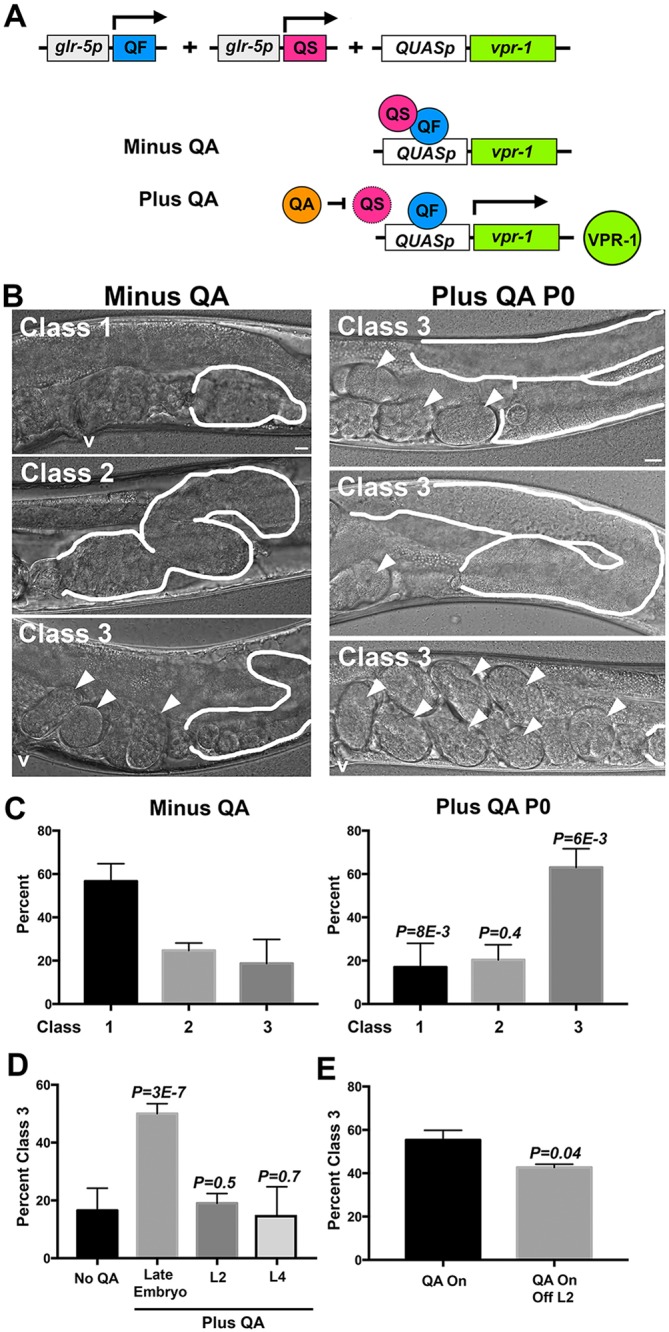Fig. 7.

Neuronal vpr-1 expression is sufficient for gonadogenesis early in postembryonic development. (A) The Q system was used to drive vpr-1 expression in head interneurons under the glr-5 promoter. Quinic acid (QA) is used to inhibit QS repressor activity and drive vpr-1 expression. See main text for an explanation of the system. (B) DIC images of transgenic vpr-1 mutants grown in the absence and presence of QA. When mutant adults (P0) lay eggs on QA plates, the F1 progeny are largely fertile. Class 1 gonads show lack of germ cell expansion and gamete development. Class 2 gonads show developing oocytes, but lack fertilized eggs. Class 3 gonads show gamete development and fertilized eggs. Gonads are outlined in white. Arrowheads indicate fertilized eggs. v, vulva. Scale bar: 10 µm. (C) Quantification of classes from A minus and plus QA. (D) Percentage class 3 mutant adults following QA addition at various times during development. The late embryo stage consisted of embryos and hatching L1 larva. L2 and L4 larval stages are also shown. (E) Percentage class 3 mutant adults comparing QA exposure throughout development (QA On) with exposure up to the L2 stage (Off L2). Data are from three or more independent experiments. Other transgenic lines produced similar results. The eggshell is a barrier to small molecules and QA exposure to worms is expected to occur at hatching. Error bars indicate s.d. Trial number is from 5-6 independent experiments. P-values were computed by two-tailed Student's t-test.
